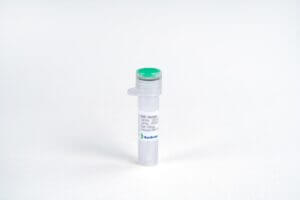100g
Showing 1851–1900 of 2169 results
-

Sodium Ricinoleate
$456.19 Add to cart View Product DetailsSodium Ricinoleate
-

Sodium Saccharin, Dihydrate, Granular, FCC
$136.53 Add to cart View Product DetailsSodium Saccharin, Dihydrate, Granular, FCC
-

Sodium Selenate, Anhydrous, Crystal
$336.70 Add to cart View Product DetailsSodium Selenate, Anhydrous, Crystal
-

Sodium Selenate, Decahydrate
$537.04 Add to cart View Product DetailsSodium Selenate, Decahydrate
-

Sodium Selenite, 99.8+ Percent, Powder
$184.25 Add to cart View Product DetailsSodium Selenite, 99.8+ Percent, Powder
-

Sodium Silicofluoride, Reagent
$86.92 Add to cart View Product DetailsSodium Silicofluoride, Reagent
-

Sodium Stearyl Fumarate, NF
$673.79 Add to cart View Product DetailsSodium Stearyl Fumarate, NF
-

Sodium Succinate, Anhydrous, Reagent
$43.06 Add to cart View Product DetailsSodium Succinate, Anhydrous, Reagent
-

Sodium Succinate, Hexahydrate, Reagent
$40.46 Add to cart View Product DetailsSodium Succinate, Hexahydrate, Reagent
-

Sodium Sulfathiazole, Sesquihydrate
$226.15 Add to cart View Product DetailsSodium Sulfathiazole, Sesquihydrate
-

Sodium Taurocholate, Natural
$1,632.57 Add to cart View Product DetailsSodium Taurocholate, Natural
-

Sodium tert-Butoxide
$59.31 Add to cart View Product DetailsSodium tert-Butoxide
-

Sodium Tetraphenylborate, Reagent, ACS
$512.81 Add to cart View Product DetailsSodium Tetraphenylborate, Reagent, ACS
-

Sodium Tetrathionate, Dihydrate
$835.52 Add to cart View Product DetailsSodium Tetrathionate, Dihydrate
-

Sodium Thioglycolate, Powder
$99.60 Add to cart View Product DetailsSodium Thioglycolate, Powder
-

Sodium Triacetoxyborohydride
$177.92 Add to cart View Product DetailsSodium Triacetoxyborohydride
-

Sodium Trifluoroacetate
$109.76 Add to cart View Product DetailsSodium Trifluoroacetate
-

Sodium Valproate, EP
$427.75 Add to cart View Product DetailsSodium Valproate, EP
-

Sodium-1-pentanesulfonate, 98+ Percent, Reagent
$302.73 Add to cart View Product DetailsSodium-1-pentanesulfonate, 98+ Percent, Reagent
-

Solvent Red 1
$338.17 Add to cart View Product DetailsSolvent Red 1
-

Sorbic Acid, Powder, NF
$50.20 Add to cart View Product DetailsSorbic Acid, Powder, NF
-

Spermine
$2,635.97 Add to cart View Product DetailsSpermine
-

Spironolactone, USP
$1,812.18 Add to cart View Product DetailsSpironolactone, USP
-

Spirulina, Powder
$138.61 Add to cart View Product DetailsSpirulina, Powder
-

St. John’s Wort Extract, 0.3 Percent Hypericin, Powder
$141.89 Add to cart View Product DetailsSt. John’s Wort Extract, 0.3 Percent Hypericin, Powder
-

Stannous Chloride, Anhydrous, Reagent
$100.23 Add to cart View Product DetailsStannous Chloride, Anhydrous, Reagent
-

Stannous Fluoride
$157.18 Add to cart View Product DetailsStannous Fluoride
-

Stannous Octoate
$76.25 Add to cart View Product DetailsStannous Octoate
-

Staphylokinase
$163.88 Add to cart View Product DetailsStaphylokinase (SAK), a 16kDa profibrinolytic protein from the Staphylococcus aureus, has been demonstrated to induce highly fibrin-specific thrombolysis in both human plasma and in limited clinical trials. Recent studies on the thrombolytic potential of recombinant SAK in achieving early perfusion in myocardial infarction and in the dissolution of platelet-rich clot have clearly established its immense utility in clinical medicine as a thrombolytic agent and suggested that it can be developed as a potent clot-dissolving agent.
-

Stearyl 3-(3,5-Di-tert-butyl-4-hydroxyphenyl)propionate
$114.83 Add to cart View Product DetailsStearyl 3-(3,5-Di-tert-butyl-4-hydroxyphenyl)propionate
-

Stevia Leaves Extract, Sweet, Powder
$153.17 Add to cart View Product DetailsStevia Leaves Extract, Sweet, Powder
-

Stilbene Yellow
$338.89 Add to cart View Product DetailsStilbene Yellow
-

Strontium Acetate
$82.94 Add to cart View Product DetailsStrontium Acetate
-

Strontium Acetate, Reagent
$98.99 Add to cart View Product DetailsStrontium Acetate, Reagent
-

Strontium Hydroxide, Octahydrate
$85.53 Add to cart View Product DetailsStrontium Hydroxide, Octahydrate
-

Strychnine Hydrochloride, Dihydrate
$634.01 Add to cart View Product DetailsStrychnine Hydrochloride, Dihydrate
-

Strychnine, Free Base
$537.04 Add to cart View Product DetailsStrychnine, Free Base
-

Suberic Acid
$227.95 Add to cart View Product DetailsSuberic Acid
-

Suberic Acid
$55.52 Add to cart View Product DetailsSuberic Acid
-

Succinimide
$140.61 Add to cart View Product DetailsSuccinimide
-

Succinonitrile
$137.29 Add to cart View Product DetailsSuccinonitrile
-

Succinylcholine Chloride, Dihydrate, USP
$2,499.40 Add to cart View Product DetailsSuccinylcholine Chloride, Dihydrate, USP
-

Succinylsulfathiazole
$171.06 Add to cart View Product DetailsSuccinylsulfathiazole
-

Sucralfate, Fine Powder, USP
$195.59 Add to cart View Product DetailsSucralfate, Fine Powder, USP
-

Sucralose, FCC
$376.14 Add to cart View Product DetailsSucralose, FCC
-

Sucralose, NF
$400.82 Add to cart View Product DetailsSucralose, NF
-

Sudan Blue 2
$988.06 Add to cart View Product DetailsSudan Blue 2
-

Sudan IV
$120.54 Add to cart View Product DetailsSudan IV
-

Sudan IV
$84.50 Add to cart View Product DetailsSudan IV
-

Sudan Orange G
$393.20 Add to cart View Product DetailsSudan Orange G






